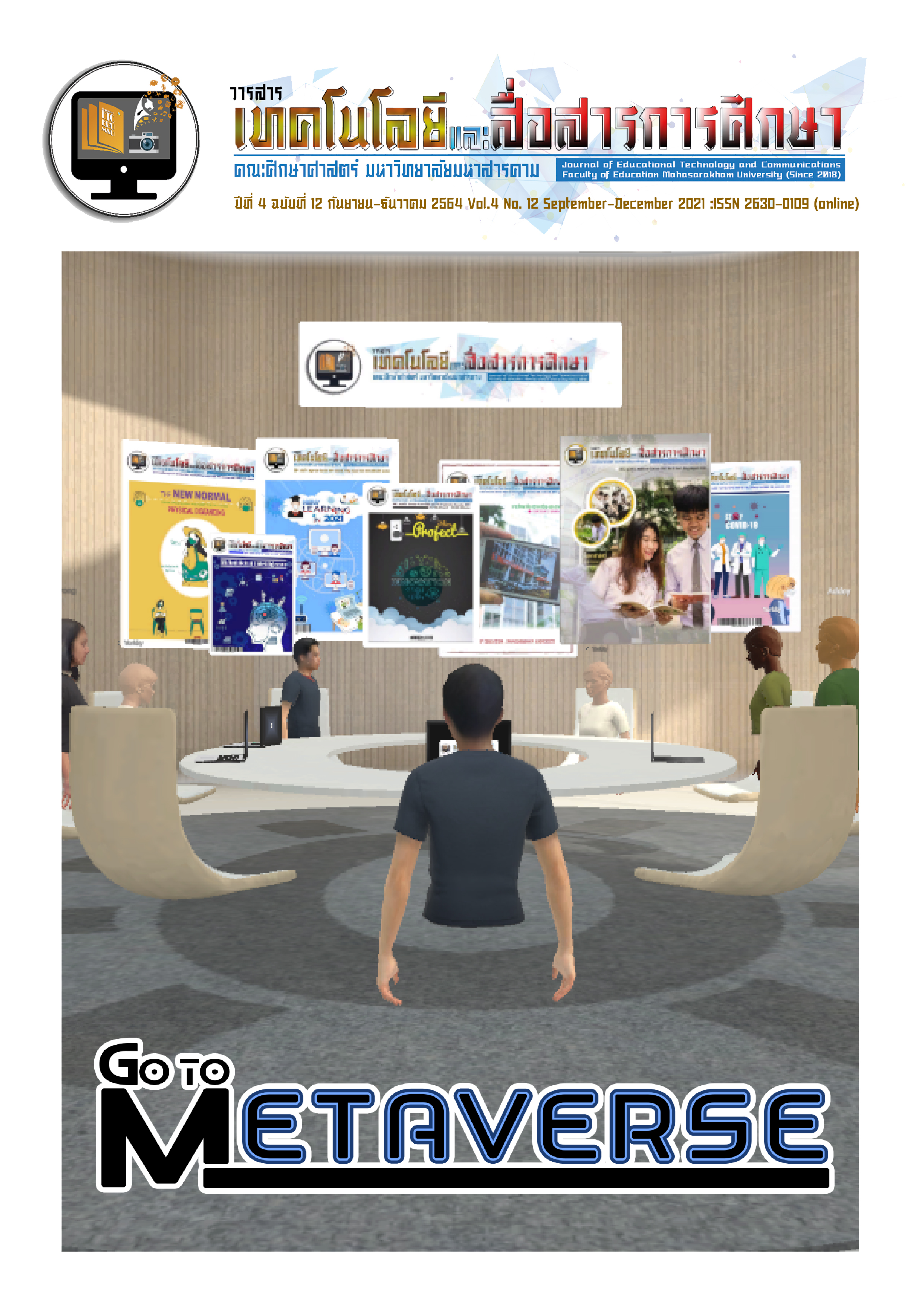The Development of Blended Training Curriculum through TOP- 5 STEPS Model on the Subject of Manual Metal Arc Welding level 1.
Main Article Content
Abstract
The purposes of this research were to 1) develop the blended training curriculum through TOP- 5 STEPS Model on the subject of Manual Metal Arc Welding Level 1, 2) study the outcome of the implementation of the curriculum. The target group for data collection was the technical education students of Industrial Welding, Technical Education faculty, Rajamangala University of Technology Isan Khonkaen campus. Results of the study: 1. The completed blended training curriculum through TOP- 5 STEPS Model on the subject of Manual Metal Arc Welding level 1 consists of various components of the principle, objectives, curriculum contents, training activities, instructional media, measurement and evaluation. The training activities are organized through blended learning range of methods such as the face to face, the practical skill training at workshop and the online participatory learning classroom. The researcher applied competence-based training method with TOP-5 STEPS Model, which emphasize the profession competency and enhance the students’ knowledge, skills and attitudes. The TOP-5 STEPS Model consisted of 5 steps: 1) competency analysis, 2) knowledge and skill educating, 3) practical skill training, 4) competency evaluation 5) analysis and conclusion which were validated by the specialists as highly appropriate at 4.60 of mean. 2. The completed blended training curriculum through TOP- 5 STEPS Model on the subject of Manual Metal Arc Welding level 1 consisted of 4 topics: 1) pre-operational preparation, 2) welding, 3) after-work storage through lecture method, 4) Manual Metal Arc Welding level 1. The process evaluation to reveal achievement of the training showed that the students’ knowledge and comprehension of Manual Metal Arc Welding level 1 was significantly higher than the before training at the level of 0.01 of significance. The student’s practical skill achievement score was 80% passing criterion of 70%. The training curriculum was in high appropriate level.
Downloads
Article Details
References
กระทรวงแรงงาน. (2564). พระราชบัญญัติ ส่งเสริมการพัฒนาฝีมือแรงงาน (ฉบับที่ 2) พ.ศ. 2557. [ออนไลน์]. ได้จาก: https://www.mol.go.th/laws/?law [สืบค้นเมื่อ วันที่ 14 มิถุนายน 2564].
กฤช สินธนะกุล. (2554). การพัฒนาหลักสูตรฝึกอบรมครูคอมพิวเตอร์เพื่อวางแผนการสอนแบบผสมผสาน วิทยานิพนธ์ปริญญาครุศาสตร์อุตสาหกรรมดุษฎีบัณฑิต สาขาวิชาวิจัยและพัฒนาหลักสูตรบัณฑิตวิทยาลัย มหาวิทยาลัยเทคโนโลยีพระจอมเกล้าพระนครเหนือ.
คุณาพร วรรณศิลป์. (2562). การพัฒนาหลักสูตรฝึกอบรมครูด้วยรูปแบบผสมผสาน เรื่องการทำวิจัยในชั้นเรียน. วิทยานิพนธ์ปริญญาครุศาสตรดุษฎีบัณฑิต สาขาวิชาหลักสูตรและการเรียนการสอน คณะครุศาสตร์ มหาวิทยาลัยราชภัฏมหาสารคาม.
เฉลิมพล บุญทศ. (2562). ศึกษาวิจัยเรื่องการพัฒนารูปแบบการฝึกอบรมสมรรถนะวิชาชีพช่างจิ๊กฟิ๊กเจอร์. วิทยานิพนธ์ปริญญาครุศาสตร์เทคโนโลยีและสารสนเทศดุษฎีบัณฑิต สาขาวิชาเทคโนโลยีเทคนิคศึกษา บัณฑิตวิทยาลัย มหาวิทยาลัยเทคโนโลยีพระจอมเกล้าพระนครเหนือ.
ชมพูนุท เมฆเมืองทอง. (2553). การพัฒนารูปแบบการฝึกอบรมการสร้างแบบทดสอบมาตรฐานวิชาชีพ. วิทยานิพนธ์ปริญญาครุศาสตร์อุตสาหกรรมดุษฎีบัณฑิต สาขาวิชาวิจัยและพัฒนาหลักสูตรบัณฑิตวิทยาลัย มหาวิทยาลัยเทคโนโลยีพระจอมเกล้าพระนครเหนือ.
ณัชชา วชิรหัตถพงศ์. (2558). การพัฒนารูปแบบการฝึกอบรมแบบผสมผสานโดยใช้ M-training และการฝึกอบรมแบบเผชิญหน้า เรื่องการใช้กระดานอัจฉริยะ สำหรับครูสังกัดโรงเรียนองค์การบริหารส่วนจังหวัดชลบุรี. วิทยานิพนธ์ปริญญาการศึกษามหาบัณฑิต สาขาวิชาเทคโนโลยีการฝึกอบรม คณะศึกษาศาสตร์ มหาวิทยาลัยบูรพา.
วิชัย คุ้มมณี. (2559). การพัฒนารูปแบบการเรียนรู้เพื่อเสริมสร้างสมรรถนะวิชาชีพช่างก่อสร้าง. วิทยานิพนธ์ปริญญาครุศาสตร์อุตสาหกรรมดุษฎีบัณฑิต สาขาวิชาเทคโนโลยีเทคนิคศึกษา บัณฑิตวิทยาลัย มหาวิทยาลัยเทคโนโลยีพระจอมเกล้าพระนครเหนือ.
สำนักงานคณะกรรมการการอุดมศึกษากระทรวงศึกษาธิการ. (2556). แผนพัฒนาการศึกษาระดับอุดมศึกษา ฉบับที่ 11 (พ.ศ. 2555-2559) กรุงเทพฯ: โรงพิมพ์แห่งจุฬาลงกรณ์มหาวิทยาลัย.
Guzzo, T., Grifoni, P. and Ferri, F. (2012). Social Aspects and Web 2.0 Challenges in Blended Learning. P. Anastasiades (ed.). Blended Learning Environments for Adults: Evaluations and Frameworks (Vol. 1, p. 35-49). Hershey, PA: Information Science

